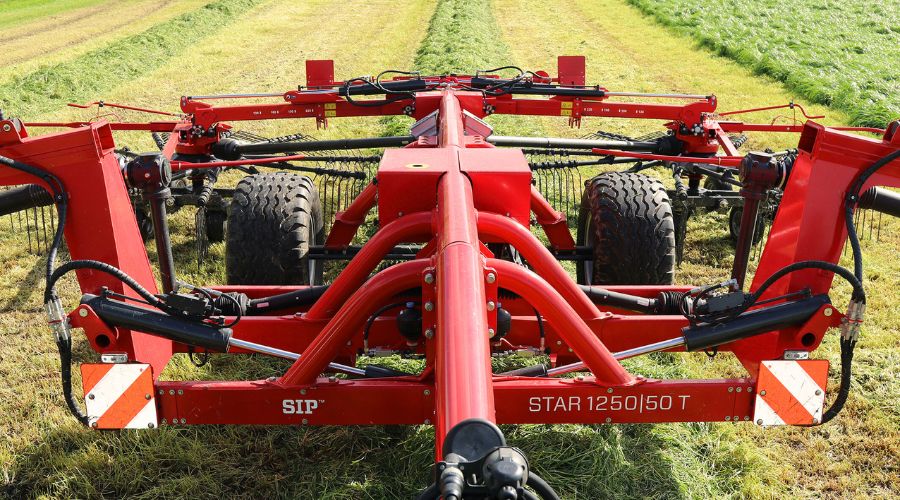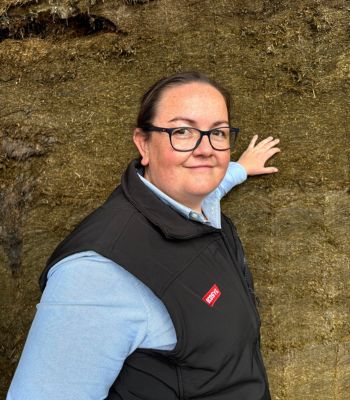Not taking first-cut silage earlier could be risking milk yield
15th February 2025
Sticking to a traditional May cutting date for making first-cut grass silage could be putting winter milk yield at risk, a silage specialist is suggesting.

According to Amanda Clements, Ecosyl technical business manager at Volac, recent seasons indicate that dairy farmers who take first-cut grass silage during April or very early May, rather than at the traditional timing of 10th May onwards, can end up with better overall silage quality.
Ms Clements said: “We saw this in 2024, but we’ve also seen it in previous seasons. It’s potentially down to two reasons.
“Firstly, with the generally mild winters we get nowadays, grass growth doesn’t seem to truly stop. So by the time mid-May comes around, swards can contain a lot of overwintered, dead or dying grass in the base.
“This thatchy material is of poor nutritional quality for milk production, but it’s also likely to contain increased numbers of unwanted bacteria. These can interfere with how well the silage ferments.
“The second reason is if you set out with a target cutting date of around 10 May, but cutting becomes delayed due to contractor availability or poor weather, grass can rapidly go to head at this time of year.
“When this happens, grass becomes more stemmy and fibrous, and therefore less digestible, and its metabolisable energy (ME) might fall from 11.5 to 10.5, which could lose 5-6 litres of milk/cow/day. Added to this, stemmy grass is more difficult to consolidate, which can add to fermentation problems and lead to silage heating in the clamp.”
Early first-cut

By seizing available weather windows to take a slightly earlier first-cut, Ms Clements said it can reduce the chance of these problems occurring, as well as remove the poorer quality, old and overwintered grass, and stimulating fresher sward growth for the next cut.
The expert added: “An early first-cut could be especially beneficial if you haven’t grazed off old grass with sheep over winter or have an excess of overwintered growth.
“An early first-cut might not produce a lot of yield in some cases, but it paves the way for a better second cut, and farmers who follow this approach can get into a position where they already have two cuts ‘banked’ by June.
“If you’re able to maintain this momentum of taking each cut before grass turns stemmy, you stand to harvest grass that’s higher in digestibility, and therefore ME, for the rest of the season. Younger grass also tends to be higher in protein, and because each cut will be lighter than if leaving grass to bulk up, it should wilt faster. This means less chance of being caught out with mown grass lying in the field if it rains.
“Cutting earlier might mean you increase from taking three cuts to four or five cuts over the year. But we’ve seen from our on-farm research that cutting more often yielded more grass over the season, and the value of the extra yield and quality outweighed the extra contractor costs.
“If the quality of one cut does become affected by the weather, it will also represent a smaller proportion of the total amount of silage made. And by using different cutting dates to other farms in the area, it can improve contractor availability.”
Ms Clements said that timely cutting remains particularly important during summer months, says Amanda, because in hot conditions grass goes to head and becomes stemmy even sooner. But as well as using more timely cutting to produce better silage, it is important not to overlook the silage quality benefits of using a proven additive.
“Ecosyl additive is proven to boost the speed of fermentation and to preserve more dry matter and better silage ME,” she says. “Feeding cows a range of silages preserved with Ecosyl in independent trials also boosted average milk yield by an extra 1.2 litres/cow/day,” she concluded.
Read more livestock news.


